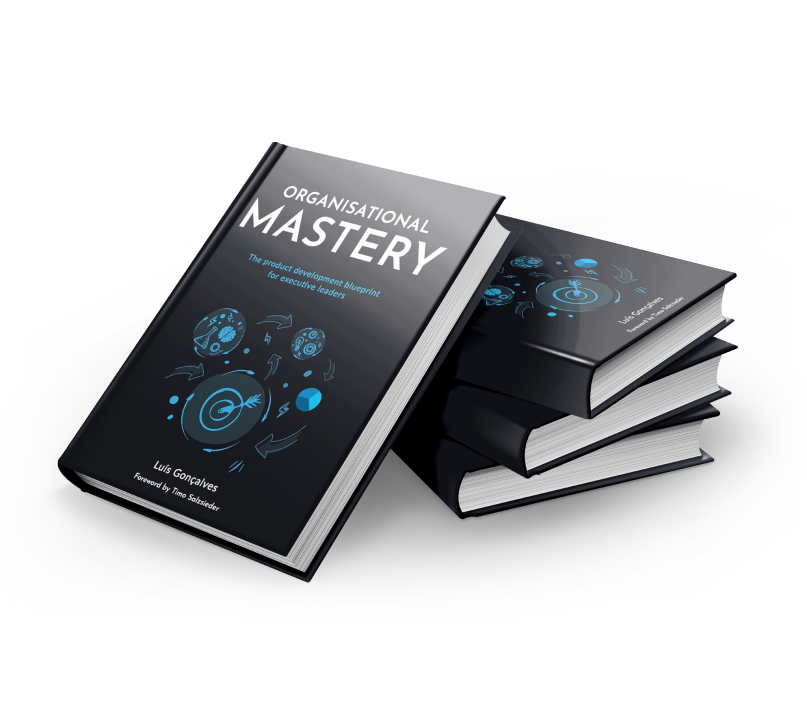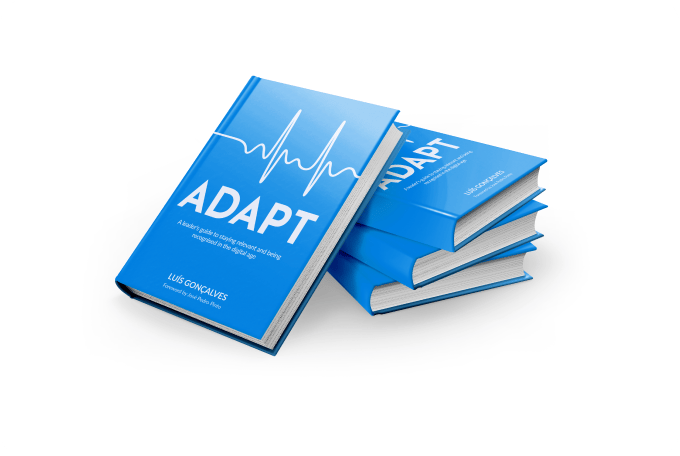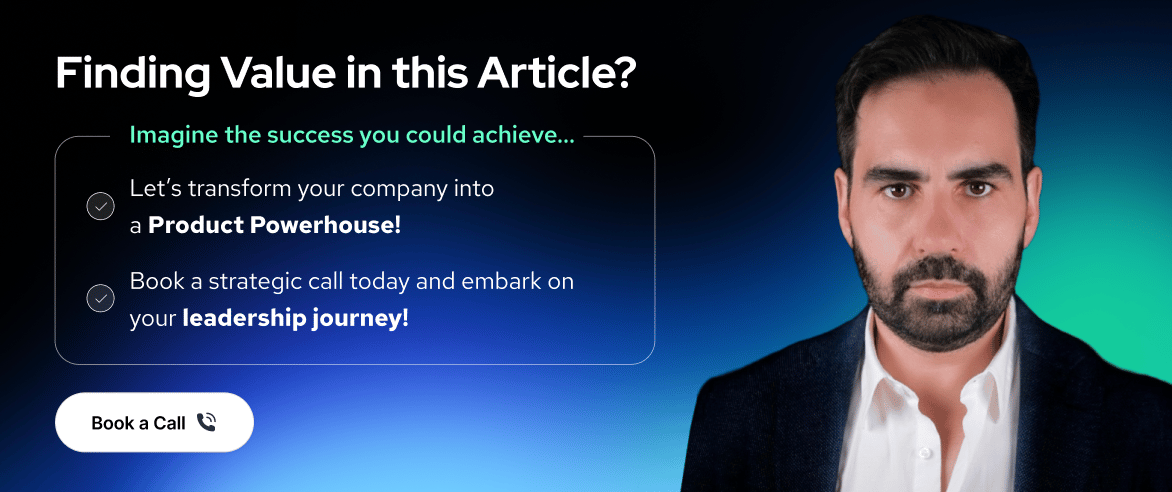Share this
Project to Product Summary: A Guide to Successful Transformation
by Luis Gonçalves on Apr 22, 2023 9:07:03 AM
The shift from project to product thinking is a growing trend in the business world, driven by the need for organizations to adapt to the ever-changing landscape of technology and customer demands. This article delves into the key aspects of this transformation, providing a comprehensive understanding of the project to product shift and the Flow Framework that supports it. By the end of this article, you will have gained valuable insights into implementing this shift and ensuring its success within your organization.
ADAPT Methodology® is a unique Digital Product Development framework to change traditional project-centric companies toward product-led companies!
Society changed and leaders need support in the way how they lead and design their digital product organizations, that is the reason why the ADAPT Methodology® was created, but now let’s get a deep dive into the “Project and Product Summary” topic.
Project vs Product
Traditionally, organizations have focused on managing their operations through a project-based approach. This involves tackling individual tasks or initiatives with a defined scope, timeline, and budget. While this method has its merits, it often falls short in addressing the rapidly evolving needs of customers and the market.
In contrast, the product-centric approach focuses on delivering continuous value by creating and maintaining high-quality products. This mindset prioritizes long-term sustainability and adaptability, allowing businesses to be more responsive and agile in meeting customer expectations.
Project to Product Shift
The Age of Software
The rise of software-driven businesses has highlighted the limitations of project-based thinking. In the digital era, innovation and agility are paramount to success. Organizations must be able to respond to market changes and customer demands quickly and efficiently. This has led to the increasing adoption of the product mindset, as it encourages continuous improvement and innovation.
Why Projects Fail
A significant factor driving the project to product shift is the high failure rate of traditional projects. Factors such as scope creep, budget overruns, and lack of stakeholder buy-in contribute to project failures. In contrast, the product-based approach promotes flexibility, adaptability, and customer-centricity, resulting in higher success rates.
The ADAPT Methodology® To Drive Your Project To Product Shift
Our Project To Product approach is the subject of my books, which outlines an iterative process based on the five pillars of my ADAPT Methodology®.
- Approach: how to acquire new customers in the digital era.
- Data: learning how to utilize your data to optimize your business and customer experience.
- Agility: the need to build a company that can react and respond quickly to changes in the market.
- Product: developing and implementing a digital product strategy.
- Transformation: why and how the entire organization needs to change so that it can competitively thrive in the digital era.
Agile Software Development has been an efficient way to develop digital products during the last few years, that´s why the 3rd pillar of the ADAPT Methodology® is called Agility, but we strongly believe that for you to have a complete Project To Product Transformation you need to include two other parts in your Project To Product Roadmap:: the product part and how to transform your entire company.
Agility Pillar
Agile Leadership & Mindset
Many people struggle to understand why adopting Agile Leadership and mindset is so hard for executive managers and leaders. The success of executives is the result of their past actions. Instead of pointing out their mistakes, we need to explain and teach today’s market so they understand the need for change.
Methodologies
Agile is a very empowering process that helps companies design and build the right product. The management process is very beneficial for software companies because it helps them analyze and improve their product throughout their development. This enables companies to produce a highly valuable product so they stay competitive in the market.
Scrum Master
Scrum Masters role is to create stable and self-organized teams with a clear and engaging direction and to educate the organization on Agile Methodologies. A crucial role that deserves full attention to achieve a successful project-to-project-to-product transformation.
Product Owner
For most companies switching to Agile, the PO role is a new and critical one. The PO’s relationships and responsibilities are not only significant but extend beyond the local team. They also work with the rest of the Project Management team, customers, and stakeholders. In this pillar, we develop internal product owners to improve business results.
Development Team and Tech Excellency
Tech Excellence brings together technical agile disciplines from software crafting to DevOps and domain-driven design with a focus on team-level practices and skills for agile software development. Agile Software Development without top-notch technical practices doesn’t deliver what we hope with Agile
Product Pillar
Strategy
Strategy is a design problem where various elements must be organized, adjusted and coordinated to solve a specific problem or challenge.
In essence, a good strategy shows how to win in the marketplace. Learn how to design a winning product strategy, how to bring it to life and how to continuously evolve it.
Business
A winning strategy can unfold into different business ideas. Which one should you pursue? Learn to design a profitable business model by iteratively exploring, evaluating, and validating them with rapid experimentation of your business ideas.
Discovery
Now, more than ever, companies need the capability to quickly learn and validate what the market needs, create new markets, evolve products, or move into adjacent markets or product categories.
The ability to kill an idea before it’s too late, the ability to change course quickly, and the ability to invest wisely as you progressively reduce uncertainty. Product Discovery is the continuous process of discovering what to build. It is about ensuring that the right thing is built for the right audience in alignment with product strategy and business goals.
Go-To-Market
The go-to-market strategy aligns the organization around the activities that must be completed to deliver something new to your target audience. This can be a product launch, a new feature, or an expansion into a different market. It defines the approach you will take to translate functionalities into messaging that will resonate with customers.
Metrics
There is a multitude of metrics related to a product. But, which are those that allow you to make informed decisions about new features, and growth strategies and to solve product performance problems quickly? Learn to define your product metrics framework and how to use it to continuously improve and drive business growth.
Transformation Pillar
Translate Strategy
Organizations that can transform their strategy into daily operational actions and measure the impact of their deliveries have a greater chance of success compared to their competitors.
Reduce Time To Market
Organizations that optimize their processes to release products rapidly have a much higher chance of standing out and beating competitors.
Continuous Improvement
Any organization must create a continuous innovation culture among all staff members to keep pace with our dynamically changing society.
Learning Organisation
In today's world, an infinite number of technologies and practices being used in organizations are being used with varying levels of success. Without a proper strategy in place to share knowledge among employees, companies have a higher chance of failure.
Innovation
In a society where disruptive products are constantly coming to market, it is essential that organizations continuously work to establish ways of working that will enable innovation to flourish at all levels within the company.
Implementing the Shift
Successfully transitioning from a project to a product mindset requires both organizational change and technological transformation.
Organizational Change
Leadership Commitment
Leaders play a critical role in driving the shift to a product-centric approach. They must actively promote the new mindset, provide clear direction, and support the teams in adopting new ways of working.
Team Empowerment
Empowering teams to make decisions and take ownership of their work is essential in fostering a product-focused culture. This encourages collaboration, creativity, and continuous improvement.
Continuous Learning
Organizations must invest in continuous learning and development to stay ahead in the fast-paced digital landscape. This includes providing training, resources, and opportunities for employees to grow and acquire new skills.
Technological Transformation
Microservices Architecture
Adopting a microservices architecture allows organizations to develop, deploy, and scale applications more efficiently. This approach facilitates rapid innovation and enables businesses to respond quickly to market demands.
DevOps Practices
Implementing DevOps practices can help organizations streamline their development and operations processes, leading to faster delivery times, improved collaboration, and better product quality.
FAQs
1. What is the project to product shift?
The project to product shift is a growing trend in the business world, where organizations transition from a project-based approach to a product-centric mindset. This shift enables businesses to be more agile, customer-focused, and innovative.
2. Why is the project-to-product shift important?
The shift is important because it allows organizations to be more responsive to customer demands and market changes. It promotes long-term sustainability and adaptability, ensuring that businesses can stay competitive in the rapidly evolving digital landscape.
3. What is the ADAPT Methodology®?
ADAPT Methodology® is a unique Digital Product Development framework to change traditional project-centric companies toward product-led companies!
4. What are some key factors in implementing the project-to-product shift?
Implementing the shift requires organizational change, leadership commitment, team empowerment, continuous learning, and technological transformation, such as adopting microservices architecture and DevOps practices.
5. How does the project-to-product shift benefit organizations?
The shift benefits organizations by promoting flexibility, adaptability, and customer-centricity. This leads to higher success rates, improved responsiveness, and a greater focus on delivering value.
Conclusion
The shift from project to product thinking is crucial for organizations looking to thrive in the digital age. By embracing the principles of the Flow Framework and driving both organizational and technological change, businesses can successfully transform their operations and deliver continuous value to their customers.
Did you like this article?
We enable leaders to become highly valued and recognized to make an impact on the World by helping them to design Digital Product Companies that will thrive and nourish in the Digital Age, we do this by applying our own ADAPT Methodology®.
If you are interested in knowing if you have what it takes to design and build a great digital product company simply take our Digital Leadership Influence Scorecard.
If you want to know how we can help you to start your transformation please check out our: Training.
If you are interested in doing a transformation in your company please check out our: Consulting.
Share this
- Agile Methodologies (18)
- Product Strategy (18)
- OKRs (16)
- Scrum (16)
- Product Mindset (14)
- Project To Product (10)
- Agile Retrospectives (9)
- CoPs (9)
- Knowledge Sharing (9)
- Time To Market (8)
- Product Discovery (7)
- Continuous Improvement (5)
- Strategy (5)
- Scrum Master (4)
- Content Marketing Strategy (3)
- Product Owner (3)
- Technical Excellency (3)
- Digital Transformation (2)
- Innovation (2)
- Scaling (2)
- Team Building (2)
- Business Model (1)
- Cost Of Delay (1)
- Customer Feedback (1)
- Customer Journey (1)
- Customer Personas (1)
- Design Thinking (1)
- Digital Leadership (1)
- Digital Product Tools (1)
- Go To Market Strategy (1)
- Google Design Sprint (1)
- Lean Budgeting (1)
- Lean Change Management (1)
- Market Solution Fit (1)
- Organisational Impediments (1)
- Outsourcing (1)
- Product (1)
- Product Metrics (1)
- Product Roadmaps (1)

Organisational Mastery
Get your free copy

ADAPT
Get your free copy

Product First
Get your free copy


